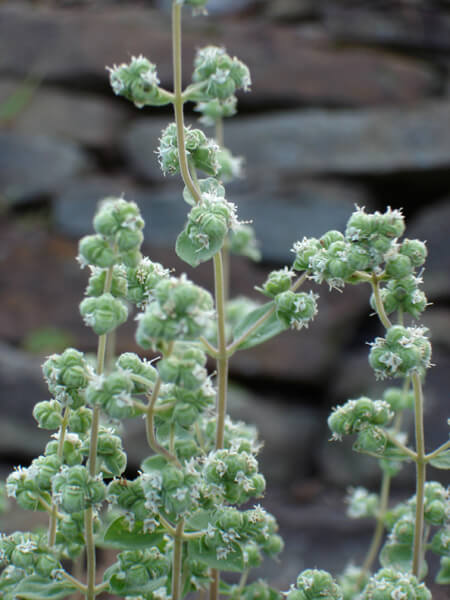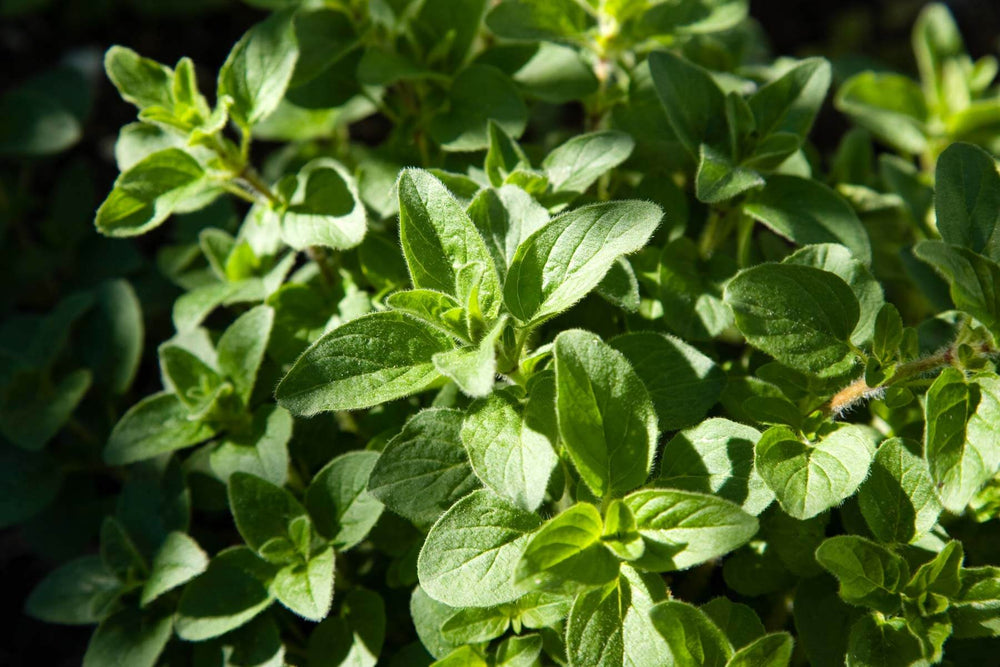Sweet marjoram, a low-growing plant native to the Mediterranean, makes a pretty summer groundcover or edging. A subtly colored plant, marjoram has thin, gray-green leaves and, in early summer, small knot-like flowers along the stem ranging in color from lilac to white. It grows well in the garden or in containers, and you can plant a nice kitchen window box using marjoram with parsley, basil, and summer annuals.
Quick Guide to Growing Sweet Marjoram
- Plant sweet marjoram in spring after the last frost. It grows well in containers but is also a great choice if you're looking for an edible groundcover.
- Space plants 12 inches apart in an area with full sun and fertile, well-drained soil with a pH of 6.7 to 7.0.
- Add nutrients to your native soil by mixing in several inches of aged compost or other rich organic matter.
- Feed regularly with a water-soluble plant food to get the best results from your growing efforts.
- Check soil moisture every few days and water when the top inch of soil becomes dry.
- Harvest sweet marjoram leaves 4 to 6 weeks after planting.
Soil, Planting, and Care
Plant sweet marjoram in the spring once there is no longer threat of frost. Sweet marjoram is slow-growing, so you will want to start with young plants instead of seed. Choose strong young sweet marjoram plants from Bonnie Plants®, which has been helping home gardeners succeed for over 100 years. Plant them 12 inches apart in full sun in rich, well-drained soil with a pH between 6.7 and 7.0. To improve the nutrition and quality of your existing soil, mix in some compost or aged compost-enriched Miracle-Gro® Performance Organics® All Purpose In-Ground Soil. If planting in pots, fill them with Miracle-Gro® Performance Organics® All Purpose Container Mix, which also contains nutrient-filled compost.
For best results, you'll want to pair all that great soil with regular feedings for your marjoram plants throughout the season. Fertilize with a water soluble plant food like Miracle-Gro® Performance Organics® All Purpose Plant Nutrition (as directed on the label). Sweet marjoram will grow to about 12 to 24 inches tall. Be sure to trim plants when buds appear (and before they flower) to ensure continued growth.
If you live north of zone 7 and want to continue growing marjoram after it turns cold, take cuttings from late spring to the middle of summer to keep in indoor pots for the winter. Otherwise, lift plants in the fall. Marjoram may also be divided in the spring or fall to begin new plants.
Troubleshooting
Note that the care of sweet marjoram differs depending on your location. In zones 9 and 10, sweet marjoram is perennial, but you might need to use mulch for protection in winter. Marjoram in zones 7 and 8 must also be mulched in winter, and even then there is no guarantee it will survive the cold weather. Marjoram should be grown only as a summer annual in zones 6 and colder. However, in south Florida, marjoram is a winter annual, which means that it will not endure summer heat and humidity.
Water the plants during extended dry spells, but be sure not to over-water, as sweet marjoram likes a slightly dry climate.
Harvest and Storage
Pick fresh marjoram leaves as needed, beginning 4 to 6 weeks after planting.
Marjoram is a very useful herb, as it keeps its full flavor even when dried. In order to dry marjoram, pick the leaves just after flower buds appear but before they open, removing no more than a third of the plant's leaves in a single harvest. Once the leaves have dried, strip them from the stem. You may harvest again when flower buds reappear later in the season.


Uses
Sweet marjoram, used lightly at the end of the cooking process, adds a nice, mellow flavour to vegetables such as spinach, beans, peas, and carrots. It is good in salads and herbed butters, as well as in vinaigrettes.
FAQs
Can I put sweet marjoram in a pot with other herbs?
Yes, sweet marjoram grows well in a container. Some herbs, like sweet marjoram, are upright and some are trailing. Be sure to combine your herbs so that each one has its place in the sun.
What are the little green balls on the tips of the marjoram stems?
You have no reason to worry. Those are actually the flower buds forming. Sometimes it is called knotted marjoram because the buds look like small knots. Actually, this is the stage when sweet marjoram has its best flavor, so if you are planning to dry some for later use, now is the time to harvest.
My sweet marjoram died while we were at the beach. It didn't dry out because we have irrigation. Do you know what could have happened?
Although sweet marjoram is a summer annual in most of the country because it will not tolerate severe cold, it can also be challenged by summer heat in southern zones. A summer shower or irrigation that is followed by intense sun almost cooks this plant in the steamy humidity that results. Mulch with small pebbles to minimize the humidity around the plant. Frequent cutting also helps because it prevents flowering, which drains energy from the plant.
The winter is too cold where I live for sweet marjoram to survive outdoors. Can I dig it up and put it in a pot to bring indoors?
Yes, please do. Sweet marjoram grows well in a container. Lift it carefully and plant in a premium quality potting mix. Cut the plant back to give it a fresh start; use or dry the trimmings. Finally, spray with insecticidal soap before bringing it indoors, and place it in your sunniest window. Put timed-release fertilizer on the surface of the potting mix to feed your plant every time you water, or use a soluble fertilizer when you water. Water when the plant begins to dry out, and watch for spider mites.




 Herbs
Herbs
 Vegetables
Vegetables
 Fruit
Fruit
 Flowers
Flowers
 Succulents
Succulents


